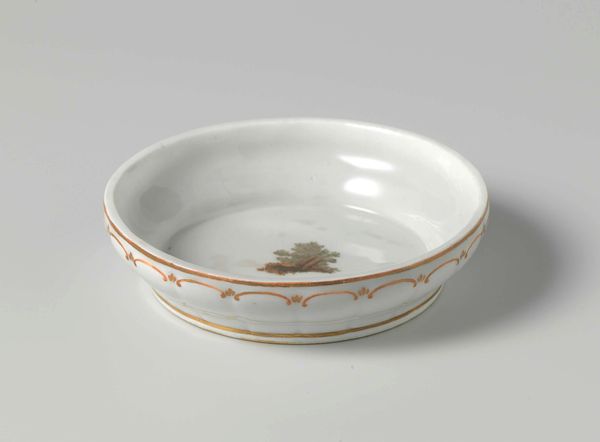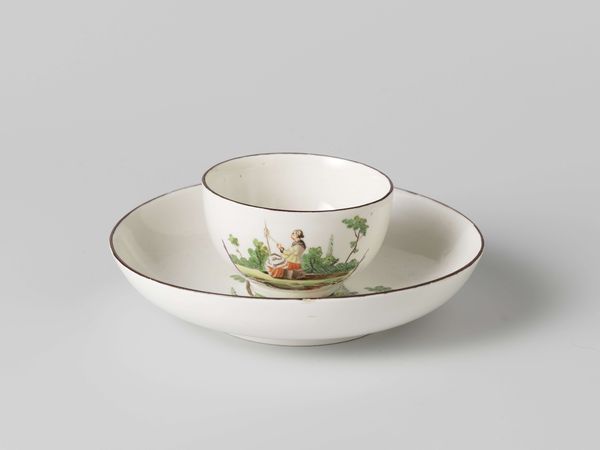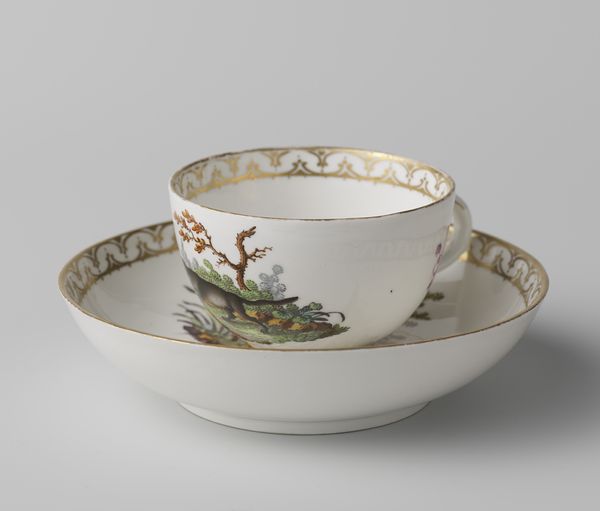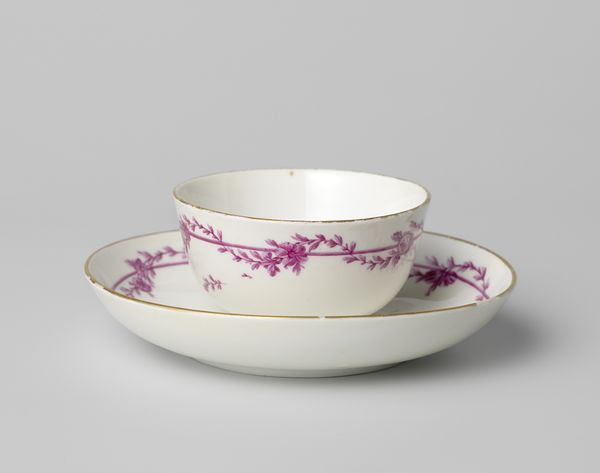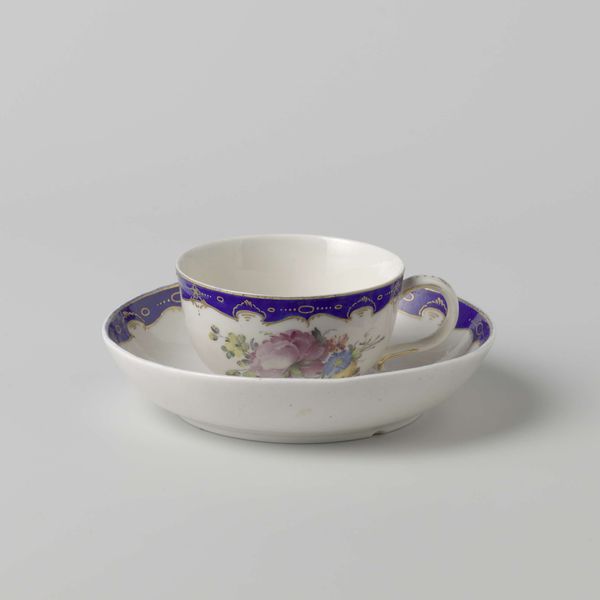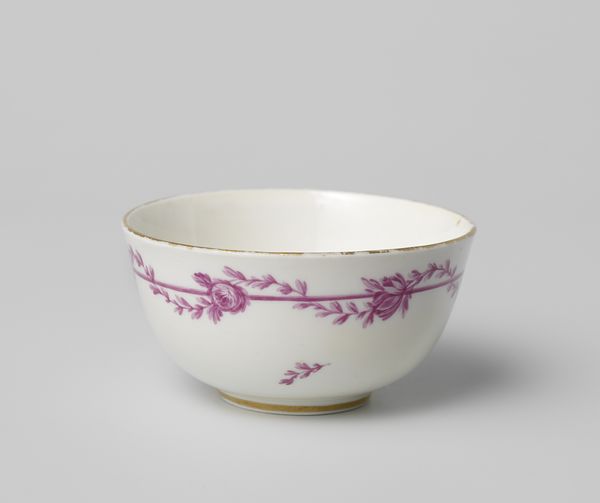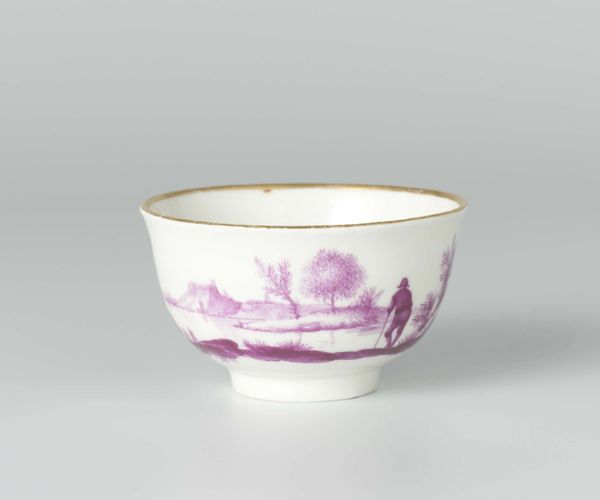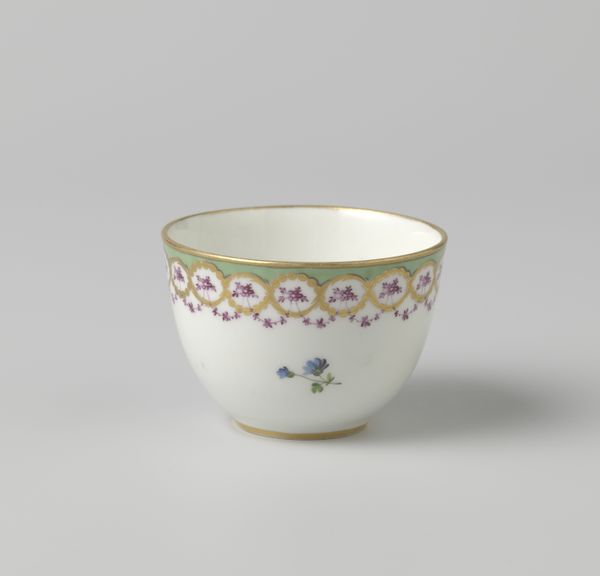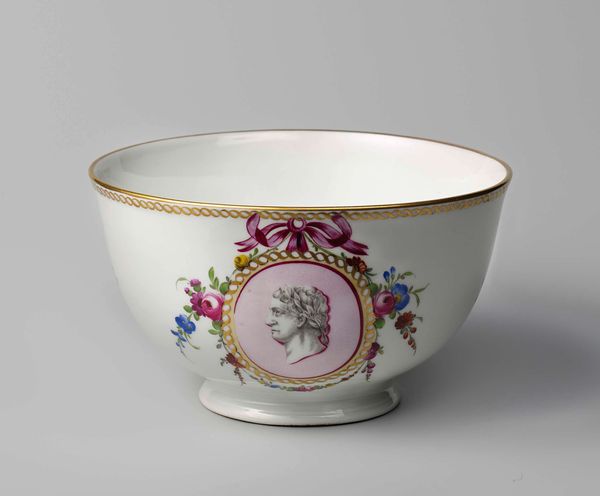
ceramic
#
portrait
#
ceramic
#
stoneware
#
ceramic
#
decorative-art
#
rococo
Dimensions: height 4.5 cm, height 4 cm, diameter 7 cm, diameter 3.3 cm, height 2.2 cm, diameter 11.7 cm, diameter 7 cm
Copyright: Rijks Museum: Open Domain
Curator: What a curious and intimate object we have here: a bell-shaped cup and saucer made around 1760. The ceramic stoneware features a portrait of Lieve Geelvinck. Editor: Immediately, I sense the delicate touch. A personal memento perhaps? It almost feels like holding a secret conversation with someone across centuries. The black and white portrait adds a touch of sombre elegance. Curator: Indeed, the piece operates on several layers. Examining the material aspect, consider the porcelain itself, likely imported, signifying global trade routes and networks of the time. This wasn't just about drinking tea; it was about displaying wealth and participation in a burgeoning consumer culture. Editor: So much intention in crafting something seemingly ordinary! To think, a face on a teacup—destined for daily, repeated interaction, and then the possibility of it shattering! Does the fragility mirror the fleeting nature of power, do you think? The fine Rococo detailing on the stoneware feels very personal to the patron’s specific tastes and aesthetic preferences, and their understanding of cultural material. Curator: Potentially! We can see the portrait as a claim to legacy. Geelvinck's likeness, transferred onto everyday objects, reinforced his position within the social and political spheres. But how ironic—here we are discussing this as art now; what was the original consumption, who held and broke them? Editor: Isn’t it profound? That this piece made it into a museum context at all, while also making me want to handle this carefully as a daily artefact for slow living! Curator: Precisely. From raw material to firing techniques, to decorative applications and then intimate usage, it highlights how class status gets expressed in every facet of life. I think seeing its evolution helps to challenge those distinctions. Editor: And me? I feel this little object whispered secrets. It prompts us to look for humanity within history. It shows how objects, even utilitarian ones, embody our collective yearning for connection, immortality...or at least a warm beverage. Curator: Well said. The layered readings invite more questions about function and status of object to consider. Editor: Agreed. Here's to tea and existential pondering!
Comments
No comments
Be the first to comment and join the conversation on the ultimate creative platform.

